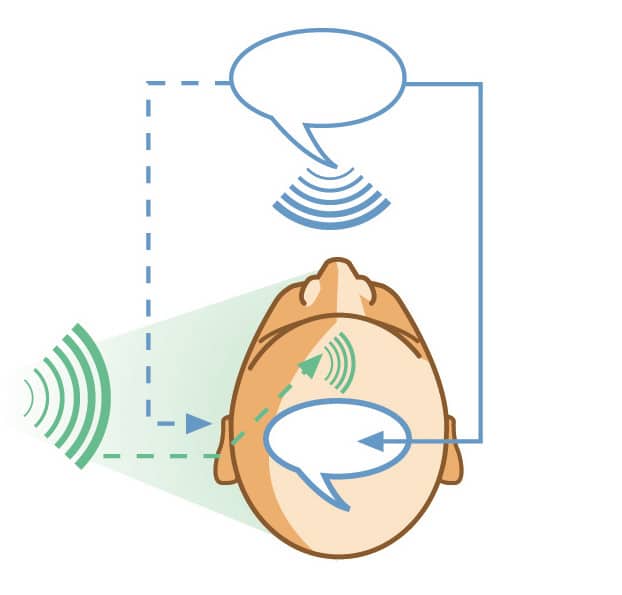
MED-EL
Published Jul 18, 2014
The Head Shadow Effect and Cochlear Implants

There are three main benefits to hearing with both ears, known as binaural hearing. In previous posts we’ve taken a look at how binaural hearing is necessary for sound localization and improves speech understanding in noise, and now it’s time to talk about the third important benefit. This one has to do with something called the “head shadow effect”.
What’s the Head Shadow Effect?
The head shadow effect is the result of a Single-Sided Deafness. When one ear has a hearing loss, then it’s up to the other ear to process the sound information from both sides of the head. That’s why it’s called a shadow: the head blocks sound in the same way that it would block sunlight.
This head shadow has different effects, depending on whether or not someone has Single-Sided Deafness or hears binaurally.
The Head Shadow Effect for Single-Sided Deafness
Basically, for someone with Single-Sided Deafness the head shadow can block important sounds from reaching the hearing ear. To help understand what happens, let’s imagine a guy named Dave. Dave has a hearing loss in his right ear and can hear normally with his left ear.
Since the hearing loss is on his right side, sounds from all directions (left and right, front and back) will be heard only through his left ear. This means that sounds from the right side are in the shadow and will have to travel around his head to be heard. In fact, this shadow would cause sounds from Dave’s right side to seem about 7 dB quieter than those from his left, depending on the specific frequency.Müller, J., Schön, F., Helms, J. (2002). Speech understanding in quiet and noise in bilateral users of the MED-EL COMBI 40/40+ cochlear implant system. Ear and Hearing, 23, 198-206.[1]
This not only causes sounds to seem quieter, but it can also make them difficult to understand. This is especially apparent in noisy situations. Think of Dave: if he’s talking to someone in front of him but there’s a loud noise to his left side, his left ear will have to process both the sounds of the speech and the sounds of the noise. That means that sounds from the front, back, and right sides will be more difficult to hear, and speech will be more difficult to understand.
The Head Shadow Effect for Binaural Hearing
For someone who has a cochlear implant and can hear binaurally, the head shadow does almost the exact opposite: where earlier it blocked important sounds from reaching the hearing ear, now it blocks unimportant sounds from reaching the implanted ear.
For Dave, this means that he can use the CI to hear sounds with both his left and right ear. If that noise is still to his left, his head will block the noise but not the speech.

The head shadow effect with a cochlear implant.
At right is a quick diagram to show how this happens:
The noise from his left side will still reach his left ear, but it’s blocked by the head from reaching his right ear. His right ear then hears only the speech without the noise interference, so it can be easier to understand.
Now Dave can hear sound clearly and know if it’s coming from his left or right side. And who wouldn’t want that?
Are you struggling with hearing loss in one ear? If your life is being seriously affected by your hearing loss, don’t give up hope. Learn how a MED-EL cochlear implant can help you hear again with both ears and connect with us for local support and guidance: Cochlear Implants for Single-Sided Deafness
References
-
[1]
Müller, J., Schön, F., Helms, J. (2002). Speech understanding in quiet and noise in bilateral users of the MED-EL COMBI 40/40+ cochlear implant system. Ear and Hearing, 23, 198-206.
References

MED-EL
Was this article helpful?
Thanks for your feedback.
Sign up for newsletter below for more.
Thanks for your feedback.
Please leave your message below.
Thanks for your message. We will reply as soon as possible.
Send us a message
Field is required
John Doe
Field is required
name@mail.com
Field is required
What do you think?
© MED-EL Medical Electronics. All rights reserved. The content on this website is for general informational purposes only and should not be taken as medical advice. Contact your doctor or hearing specialist to learn what type of hearing solution suits your specific needs. Not all products, features, or indications are approved in all countries.

MED-EL

MED-EL



